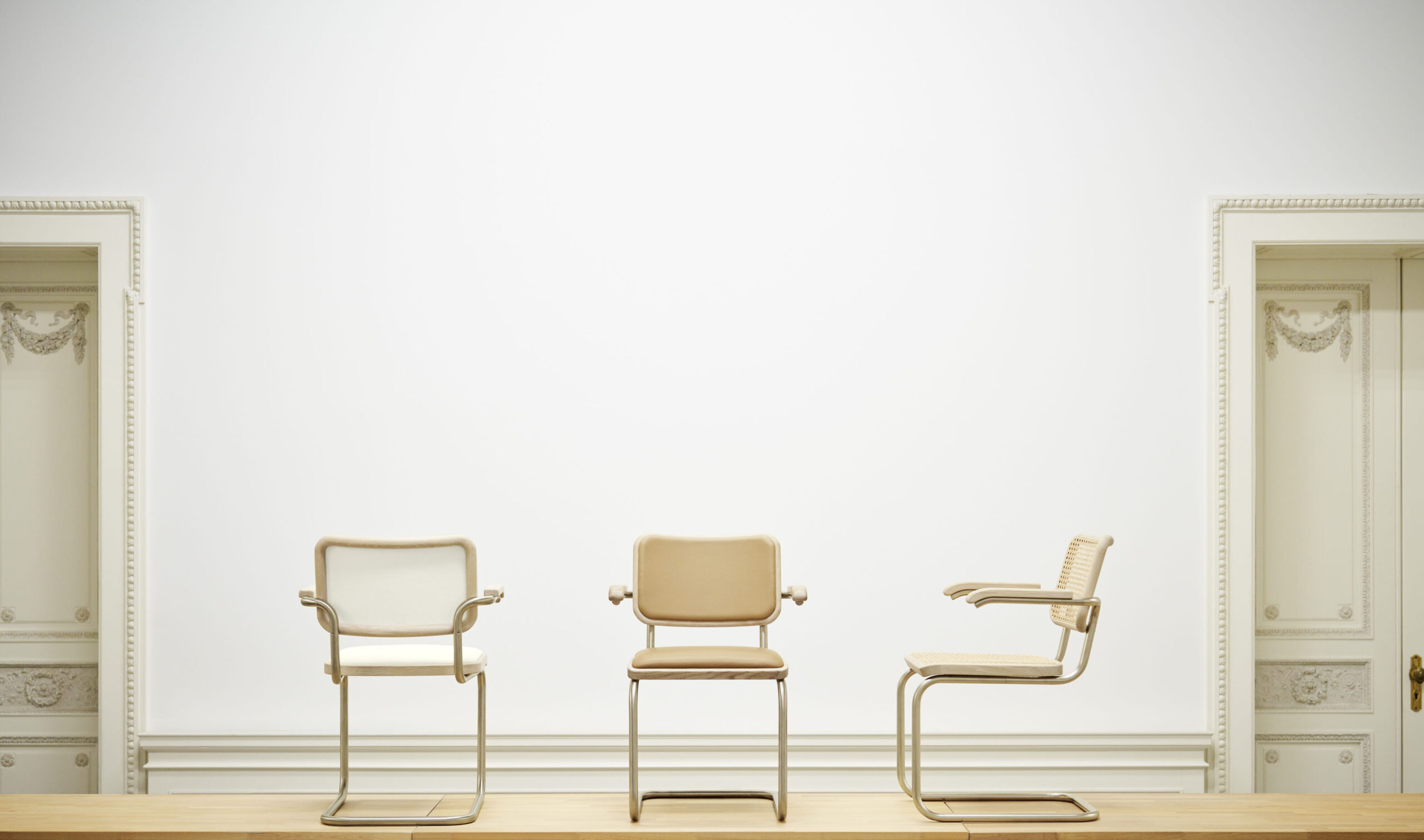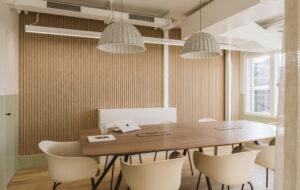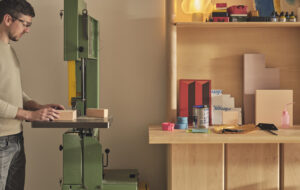 The planetarium’s grass roof strengthens its connection with nature|The exterior is clad in untreated aluminium that will develop a patina over time|The planet-like dome of one of the theatres, and a cluster of florescent tubes||
The planetarium’s grass roof strengthens its connection with nature|The exterior is clad in untreated aluminium that will develop a patina over time|The planet-like dome of one of the theatres, and a cluster of florescent tubes||
“Like two lenses looking at the sky,” is how Jean-François Julien, associate architect at Cardin Ramirez Julien, describes his firm’s futuristic architecture for the Rio Tinto Alcan Planetarium in Montreal, Canada. He’s referring to the architectural anchors – two metallic truncated cones that house the planetarium’s two main domed theatres. Like giant telescopes, their form boldly declares the building’s purpose. “If you don’t know what’s inside, you should be able to figure it out,” he says.
Shining and contemporary, the exterior’s untreated aluminium cladding evokes a scientific, space-age theme. But according to Julien, this was not the main reason for its selection. “Our interest in the material was how it played with light, day and night,” he explains. “It’s beautiful, and it develops
a patina. It’s also a kind of signature for the planetarium, because the material isn’t used anywhere else in Montreal.”
Working with local practice Aedifica, Cardin Ramirez Julien’s main aim for the planetarium was to connect it with nature, because, as Julien explains, it is from deep within nature that most people first realise there are so many stars. The site, formerly a car park for the Olympic Stadium, and now also home to a new biodome, botanical gardens and insectarium, has a renewed focus on public space, with visitors able to access around 50% of the roof, plus plenty of gardens and “little nooks”. The telescopic theatres also protrude from a green roof, a major contributing element to the project achieving its LEED Platinum certification.
The connection to nature continues inside, where large windows afford the space with natural light and views. One theatre dome is coated in wood and surrounded by a slatted wood ceiling, an injection of natural warmth in the stark monochrome interior, but also a subtle nod to astronomy, looking akin to the planets Saturn and Jupiter.
Otherwise, the interior is clinical and minimalist in black, white and silver, with a cluster of fluorescent tubes adorning the ceiling like “a cloud of light” says Julien; “we were all thinking of light sabres too,” he laughs. The aluminium outer skin of the other theatre also reaches down inside the hub space, “to make people understand the volume of the building”.
This, together with the usable roof space and open-plan design, shows how the interior and exterior interweave, which is all part of the project’s underlying theme of stargazing and nature coming hand- in-hand. It’s rare for a project of this type, which is traditionally very enclosed.
“People like to know whether it’s day or night, raining or sunny; to feel the nature inside,” says Julien. “We wanted people to enjoy the space and light, to see the trees and plants, wherever they are. We always like people to feel the outside inside.”
























